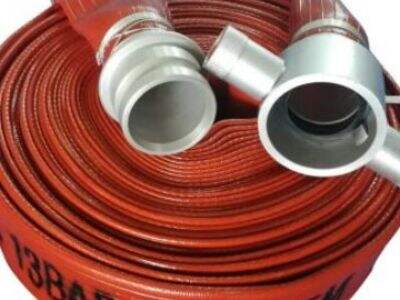To connect hoses together and deliver water to extinguish fires, firefighters use special equipment called fire hose couplings. Different couplings are used for specific firefighting situations. Fire Hose Couplings Types and How They Work
Different kinds of fire hose couplings serve separate purposes. A common one is storz coupling. This is a quick-connect coupling that allows firefighters to easily connect hoses without twisting them. Storz couplings are used in emergent situations when every second matters.
There is also a threaded coupling. This one requires firefighters to twist the hoses together in order to create a strong connection. Water leaking out can not be allowed very special type civil works, so threaded couplings are often used. Couplers like these can have a higher connection time but they are extremely stable under certain conditions.
Fire Hose Couplings: A Buying Guide
Fire ground requirements when selecting a fire hose coupling Storz couplings are the best option if they need to put together hoses as fast as possible to battle a fast-moving fire. But if they require a snug fit to prevent water from leaking, threaded couplings are superior.
The other aspect to pay attention to is the sizes of the hoses. Different couplings correspond with different hose sizes. Selecting the correct size coupling guarantees that the coupling fits tightly without failure when conducting firefighting operations.
Looking Into Additional Fire Hose Coupling Solutions
Other types of couplings for fire hoses with special arrive needs, besides storz and threaded couplings. Typically, Barcelona couplings are used in offshore or coastal areas where saltwater is surrounding the area. These couplings are immune to saltwater corrosion, retaining by quality.
The Cleveland coupling is another type. This is an industrial firefighting heavy duty coupling. This means Cleveland couplings are also suitable for those high-pressure, high-heat, and challenging environments.
A Comparison of Common Fire Hose Couplings
Let us examine how storz couplings differ from threaded couplings and Cleveland couplings fire hose:
They knuckle together quickly and create a solid bond in a crisis. They are great when firefighters need to act quickly.
To connect threaded couplings, the hoses twist together. They take a little longer to connect than storz couplings, but they seal tightly to prevent water leaks.
Cleveland couplings are durable and can withstand high pressure and heat. They are vapor resistant, so they're applied by industrial firefighting and in survival elements.
The Device Designed to Prevent Name Mixing
Choose a fire hose coupling appropriate to the application For instance, Garden Hose if firefighters are faced with a rapidly-growing fire, storz couplings are most effective. If they require a snug fit to prevent leakage, threaded couplings are a superior option.
Knowing the different kinds of fire hose couplings and how they function will help firefighters select the right hose coupling for their task. This enables them to combat the blaze to save lives and property.

 EN
EN
 AR
AR
 FR
FR
 DE
DE
 KO
KO
 CS
CS
 DA
DA
 NL
NL
 FI
FI
 EL
EL
 IT
IT
 JA
JA
 NO
NO
 PL
PL
 PT
PT
 RO
RO
 RU
RU
 ES
ES
 SV
SV
 TL
TL
 IW
IW
 ID
ID
 LV
LV
 LT
LT
 SR
SR
 SK
SK
 SL
SL
 UK
UK
 SQ
SQ
 ET
ET
 HU
HU
 TH
TH
 TR
TR
 FA
FA
 AF
AF
 IS
IS
 MK
MK
 KA
KA
 UR
UR
 BN
BN

